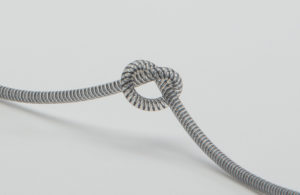Medtech companies have demanded increasingly complex geometries in medical tubing. Here’s a rundown of five manufacturing processes that could help them get there.
Dan Sanchez, Trelleborg Healthcare & Medical

Geometric transition extrusion
With geometric transition extrusion, tool components can be moved during the extrusion process to change tubing geometry. For example, a tube can transition from single to multiple lumens or split from a multi-lumen tube into two or three single lumen tubes. Extruding different geometries in one process eliminates assembled joints that may be weak or create internal misalignments where fluids can become turbulent or stagnate. Read more about geometric transition extrusion here.
Twisted
This extrusion process produces a continuously twisted tubing for use in applications where implanted power or sensing cables require strain relief from repeated flexing and bending, as with pacemaker leads. The tube cross-section typically consists of a center lumen and multiple outer lumen. The twisting process causes the outer lumen to become spiraled around the center lumen. Wires fed through the outer lumen are then less prone to dynamic flex failures because the stresses are distributed more evenly to the multiple wires. The process does not require the tubing to have a round outer diameter (OD). And features, such as grooves, can be incorporated on the OD.
Reinforced
Silicone tubes can be made kink-resistant by reinforcing them with nylon monofilaments in a double-helix configuration. The monofilaments are embedded in the tube wall to add radial strength and reduce the likelihood the tube will compress. Reinforced tubes are ideal for long-term implantable devices because they allow fluid to flow from the device into the body, or between implanted components, regardless of bodily movement. The tube remains open when muscles flex, ensuring consistent fluid transfer in all positions.
Multi-lumen
Extrusions with multiple lumens are commonly used to carry multiple wires or fluids to, or within, the body. Such tubes typically have four to five lumens but have been manufactured with 20+ lumens. The lumens are often symmetrical within a round tube. But they can also be asymmetrical, varying in size and position within the extrusion. Even ribbons consisting of tubes connected tangentially can be extruded if a lower profile is required. Inspection methods become more critical as lumen numbers increase and as the number of inspected dimensions multiplies to include all walls between lumen and between lumen and OD. This is especially true in smaller, increasingly more complex implanted smart devices, such as those incorporating power, sensors, and/or drug delivery.
Micro-extrusion
Silicone tubes in diameters as narrow as 0.014 in. OD and 0.007 in. ID can be produced to accommodate precise drug delivery. They can also be used as scaled-down devices for neonatal applications. Measurement methods become especially critical for these products and often require custom innovations to measure ever-shrinking sizes and tolerances with accuracy.
Dan Sanchez is a product manager at Trelleborg Healthcare & Medical. He has been working closely with customers on GeoTrans projects for 21 years. For more information on GeoTrans, visit www.tss.trelleborg.com/healthcare.
The opinions expressed in this blog post are the author’s only and do not necessarily reflect those of Medical Tubing + Extrusion or its employees.

